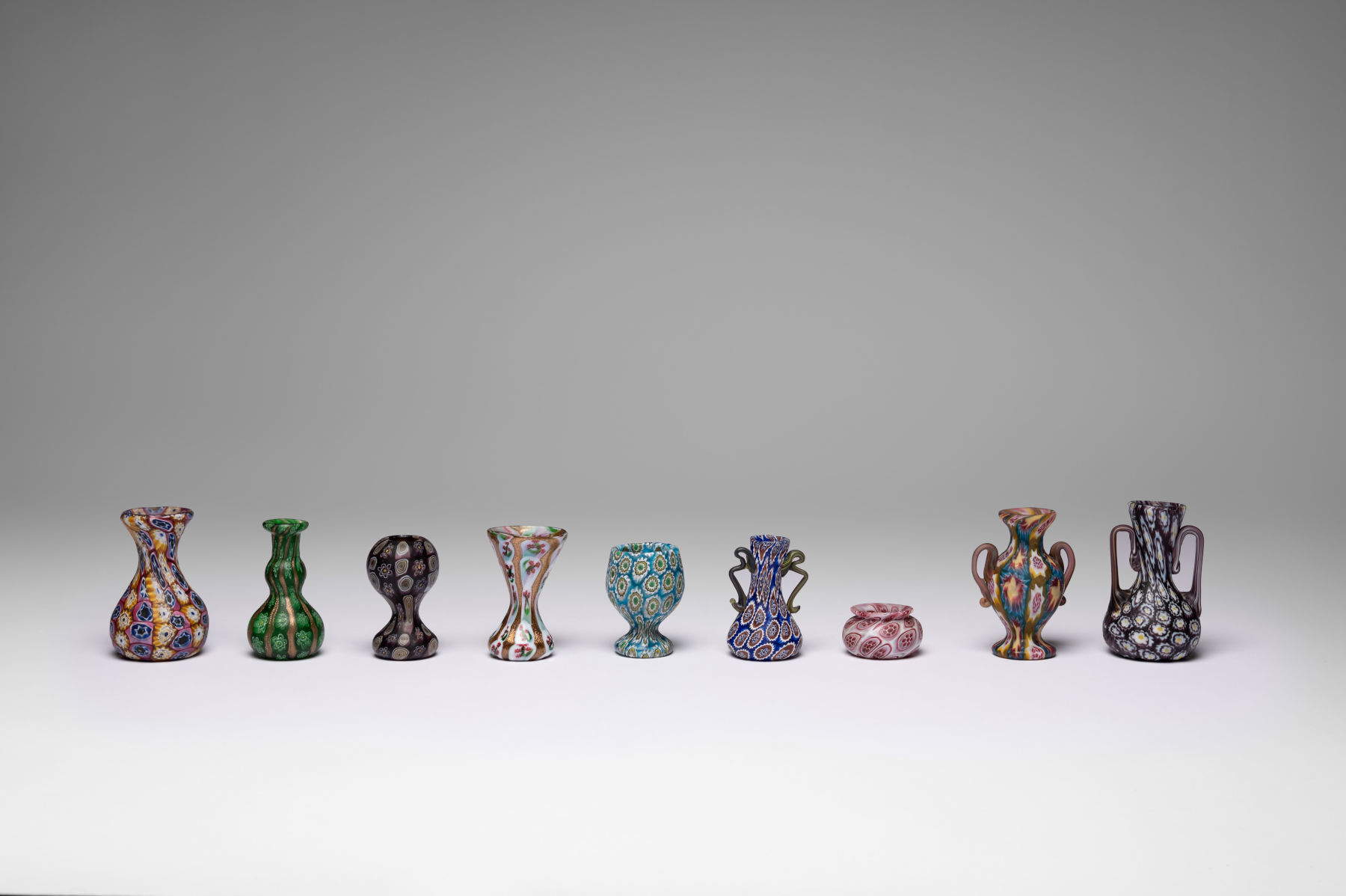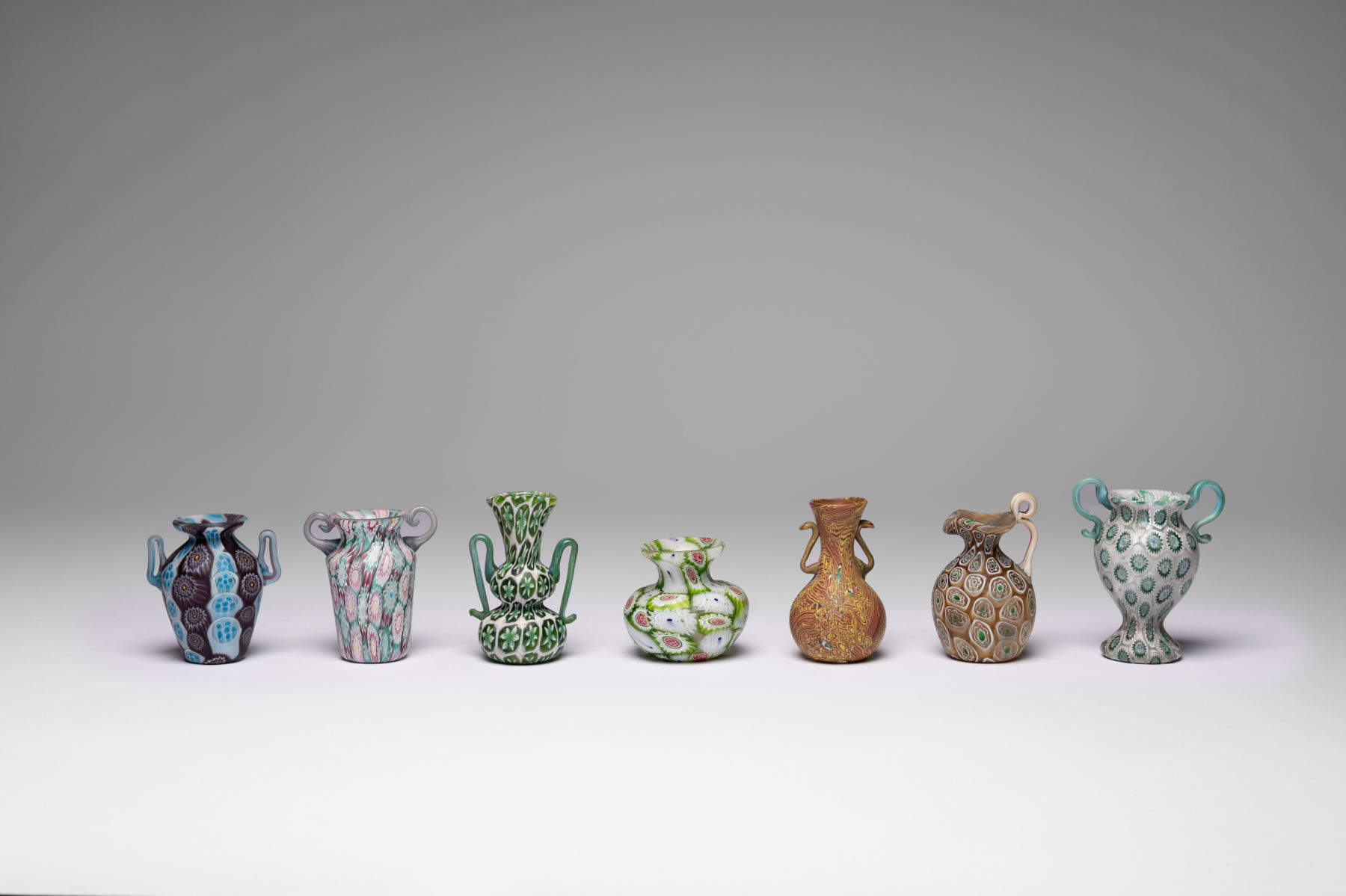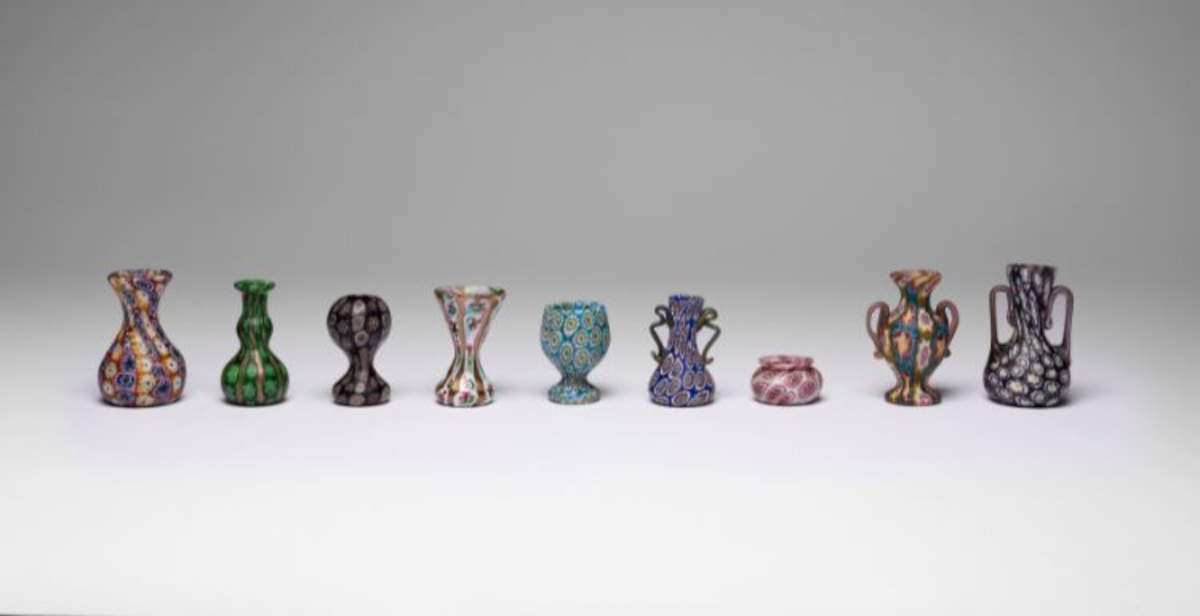From July 12 to Nov. 24, 2025, the Murano Glass Museum opens its halls to the exhibition Fratelli Toso. Stories of Factories. Stories of families, curated by Chiara Squarcina and Caterina Toso. The exhibition is part of the museum’s project dedicated to the island’s great families that have intertwined art, enterprise and innovation, following recent in-depth stages on NasonMoretti. With more than 250 glass works, original sketches, sketches, photographs and documents from the family archives, the exhibition offers a retrospective of the most representative production of the 20th century by Fratelli Toso, reconstructing the technical and stylistic transformations that have marked the history of the Murano-based company.
Founded in 1854, Fratelli Toso is one of the longest-lived companies in the Venetian glassmaking tradition. Its birth coincides with a delicate historical moment: after the crisis that had hit Murano in the first decades of the 19th century, following the fall of the Serenissima and under Habsburg rule, the Toso family’s activity represents one of the first reopenings of artistic furnaces on the island. Strongly rooted in the area, the family, already active in the industry for generations, inaugurated a path that initially looked to the past, replicating and reinterpreting Renaissance and Baroque styles. The revivalist approach, widespread in late 19th-century art, characterizes the initial phase of production.
“This exhibition is part of a scientific program dedicated to the study and valorization of the main Murano glass dynasties,” says Chiara Squarcina, Scientific Director of Fondazione Musei Civici di Venezia and head of the Murano Glass Museum. “Through a historical-critical reading of the material and immaterial heritages preserved, the museum aims to restore the cultural and productive complexity of realities that have deeply marked the identity of Murano. Fratelli Toso is an emblematic case in point: a manufacture that, over the course of more than a century and a half, has been able to combine technical innovation, formal design and family continuity, contributing significantly to the history of contemporary glass.”

“This exhibition stems from a path that is deeply rooted in the history of my family, and in particular in the Fratelli Toso archive, preserved and handed down from generation to generation,” says Caterina Toso, co-curator of the exhibition. “Today, curating this exhibition, I start again from the rigor of research to transform it into visual storytelling, placing side by side with this precious legacy new interpretative keys, insights and stories yet unpublished, in a continuous dialogue between past and present.”
The glassworks’ public debut took place in 1864 on the occasion of the First Murano Glass Exposition, hosted by the same museum that now houses the exhibition. On that occasion, the furnace presented an impressive chandelier, awarded the event’s only gold medal and a diploma of honor. The work, now preserved in the museum’s collections, takes on symbolic value for the entire exhibition: it represents the desire to reaffirm Murano excellence through production of a high technical and formal level.
In the period prior to World War I, Fratelli Toso’s production was divided into two main lines: on the one hand models in Stile Antico and Stile Moderno, and on the other the Fenicio and Floreali series. At the same time, collaborations emerged with internationally prominent figures such as Hans Stoltenberg Lerche, a Norwegian artist with a passion for the applied arts, influenced by Nordic Art Nouveau, who helped graft new suggestions into the Murano tradition.
Starting in the 1920s, the glassworks adopted a more essential language, in keeping with the Deco aesthetic. Shapes become lighter, glass becomes blown and decorations become more refined. In this context comes the collaboration with Guido Cadorin, which will be followed by that with Vittorio Zecchin in the following decade. Zecchin signs for Fratelli Toso a series of slender chalices, with elongated stems and stylized leaves applied to the sides, presented at the XXI International Art Exhibition of the Venice Biennale in 1938. Two years later, the kiln again participated in the Biennale with a selection of blown glass objects with naturalistic forms. Works that are striking for their transparency and lightness, the result of continuous experimentation on the balance between matter and form.

Beginning around 1930, production was enriched with glassware with more material characteristics, such as pulegosi, incamiciati and glass pastes. At the same time, research on murrina intensified. Fratelli Toso moves away from traditional compositional symmetry to explore novel solutions, introducing types such as Mutras and Marmorini. The new murrinas are distinguished by plastic effects, irregular color combinations, and chromatic layering that amplify visual impact.
In the postwar period, under the artistic direction of Ermanno Toso, murrine was reinterpreted according to a contemporary sensibility. The works of this period are characterized by a strong expressive charge, while remaining firmly anchored in tradition. Alongside Ermanno, Pollio Perelda and Rosanna Toso mark two other significant milestones in the company’s history. Perelda introduced a language close to painting, while Rosanna Toso, the only woman to have held managerial positions in the firm, contributed to outlining an elegant style, capable of dialoguing with the minimalism of the 1970s. From the 1960s, with the entry of Giusto and Renato Toso, the glassworks’ production definitely opened up to design. The focus is on furniture and lighting, with increasing use of crystal and monochrome glass. The objects made in these years take on the value of real light sculptures, a synthesis of function and formal experimentation.
 |
| Fratelli Toso: a retrospective of 170 years of Murano art at the Murano Glass Museum |
Warning: the translation into English of the original Italian article was created using automatic tools. We undertake to review all articles, but we do not guarantee the total absence of inaccuracies in the translation due to the program. You can find the original by clicking on the ITA button. If you find any mistake,please contact us.